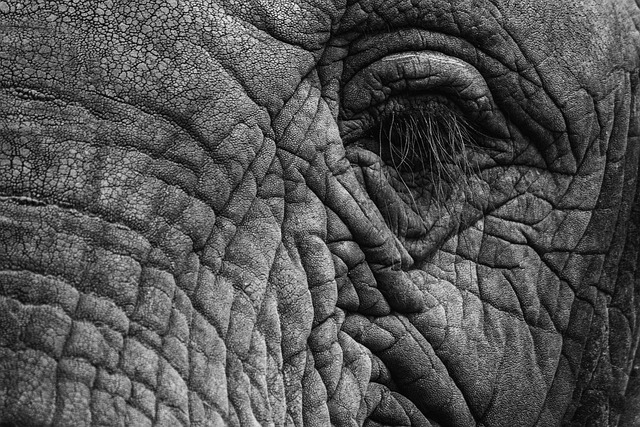Unraveling the Enigma of Elephant Tears
Elephants, known for their intelligence and complex social structures, have long fascinated researchers and animal lovers alike. Recent studies have shed light on a peculiar behavior that has captured the imagination of scientists and the public: elephant tears. This phenomenon, once dismissed as anthropomorphic speculation, is now being examined through the lens of cutting-edge research, revealing surprising insights into elephant emotion and physiology.

The Physiology of Elephant Tear Production
Elephant tear production is a complex physiological process that involves several glands and ducts within the eye structure. Unlike humans, elephants possess a unique tear-producing organ called the Harderian gland, which is absent in most other mammals. This gland, located behind the eye, secretes a lubricating substance that helps protect the eye from dust and debris.
Research has shown that elephant tears contain a mix of proteins, electrolytes, and other compounds that differ from those found in human tears. This composition suggests that elephant tears may serve multiple purposes beyond simple eye lubrication. Some scientists speculate that these tears might play a role in thermoregulation, helping elephants cool down in hot environments.
Emotional Tears or Physiological Response?
One of the most controversial aspects of elephant tear production is whether it can be linked to emotional states. While some researchers argue that elephants may produce tears in response to strong emotions, others caution against anthropomorphizing this behavior.
A groundbreaking study conducted in 2020 at the Elephant Nature Park in Thailand observed increased tear production in elephants during highly emotional situations, such as reunions with family members or periods of stress. However, critics argue that these observations could be explained by other factors, such as changes in environmental conditions or physiological responses unrelated to emotion.
The Role of Tear Production in Elephant Communication
Recent research has suggested that elephant tear production may play a role in intraspecies communication. Elephants have a highly developed sense of smell, and scientists have discovered that their tears contain chemical compounds that could potentially convey information about an individual’s emotional or physiological state.
This chemical communication through tears, known as “emotional tearing,” has been observed in other mammals, including mice. If confirmed in elephants, it would represent a significant breakthrough in our understanding of elephant social behavior and communication strategies.
Implications for Conservation and Animal Welfare
The study of elephant tears has important implications for conservation efforts and animal welfare practices. Understanding the physiological and potential emotional aspects of tear production can help researchers and caretakers better assess the well-being of elephants in both wild and captive settings.
For instance, abnormal tear production patterns could indicate underlying health issues or stress, allowing for early intervention and treatment. Additionally, this research may inform the development of more effective enrichment programs for captive elephants, taking into account their emotional needs and social structures.
Future Research and Technological Advancements
As technology advances, researchers are developing new tools to study elephant tear production in greater detail. Non-invasive methods, such as thermal imaging and spectroscopy, are being used to analyze tear composition and production rates without disturbing the animals.
These technological advancements are opening up new avenues for research, allowing scientists to explore questions about elephant cognition, emotion, and social behavior that were previously beyond reach. Future studies may focus on comparing tear production across different elephant species, age groups, and social contexts to gain a more comprehensive understanding of this fascinating phenomenon.
The enigma of elephant tears continues to captivate researchers and animal enthusiasts alike. As we unravel the complexities of this behavior, we gain not only a deeper understanding of these magnificent creatures but also valuable insights into the broader world of animal emotion and cognition. The study of elephant tears serves as a reminder of the intricate and often surprising ways in which animals experience and interact with their environment, challenging us to expand our perceptions of the emotional lives of non-human species.





